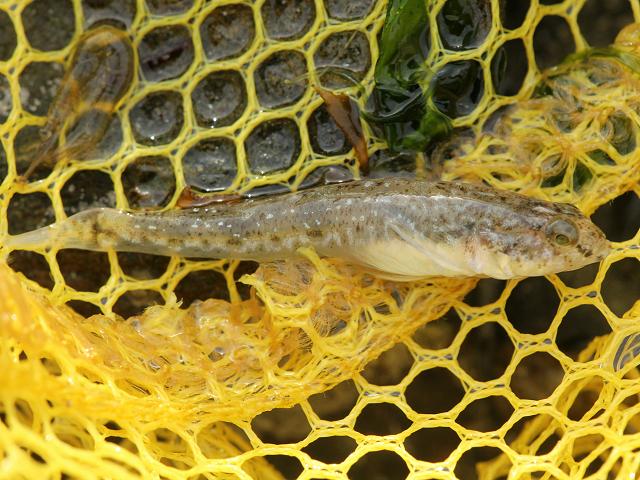
APHOTOMARINE
An educational resource dedicated mainly to the photography
and diversity of marine life that can be found in coastal waters
and intertidal areas of Great Britain and Ireland by David Fenwick.

Pomatoschistus microps (Krøyer, 1838) - Common goby (Rockpool fish)
Scroll down and rollover titles to change screen image or click on title to view image.
Common goby
Pomatoschistus microps
- in net / side view 1
Pomatoschistus microps
- in net / side view 1
Common goby
Pomatoschistus microps
- in net / side view 2
Common goby
Pomatoschistus microps
- in net / top view 1
Common goby
Pomatoschistus microps
- in net / underside 1
Common goby
Pomatoschistus microps
- with rule / side view 1
Common goby
Pomatoschistus microps
- with rule / top view 1
Specimen avove was found in a pool at Chyandour Rocks, Penzance, Cornwall. 25.09.11.
Common goby
Pomatoschistus microps
- dorsal view juvenile 1
Common goby
Pomatoschistus microps
- dorsal view head juvenile 1
Common goby
Pomatoschistus microps
- dorsal view head juvenile 2
Common goby
Pomatoschistus microps
- head juvenile 1
Specimen above was found in brackish conditions near the bridge at the head of Copperhouse Pool, Hayle, Cornwall. 18.08.16.
Common goby
Pomatoschistus microps
- head 2
Common goby
Pomatoschistus microps
- side view 1
Common goby
Pomatoschistus microps
- side view 2
Common goby
Pomatoschistus microps
- side view / in pool 1
A common species, found in estuaries, sandy bays, and sandy bottomed rockpools. The species is very difficult to identify as it looks very similar to both Sand goby and Painted goby, to which it is closely related. It is important to study the fins and count the number of scales to determine this species.
Anterior dorsal fin - 6 spines.
Posterior dorsal fin with 1 spine and 8-10 rays. 39-52 scales from pectoral fin to tail. Ref: A Students Guide to the Seashore by J.D. Fish and S. Fish.
Images of species taken at Par Beach, Par, near St. Austell, Cornwall, 23.01.10; also at Chyandour Rocks, Chyandour, Penzance, Cornwall, 25.09.11.
Scientific and European Names:
Pomatoschistus microps, Common goby, Strandgrundel, Brakwatergrondel, Gobie commun, Gobie tachete, Gobito, Ghiozzetto baltico.

The main objective of this website is in furthering environmental awareness and education through the medium of photography. To increase awareness and access to the wildlife of the region and help
people find and identify it. Sometimes the difference between species is obvious but many species can only be determined by observing microscopic characteristics that are specific to any one species.